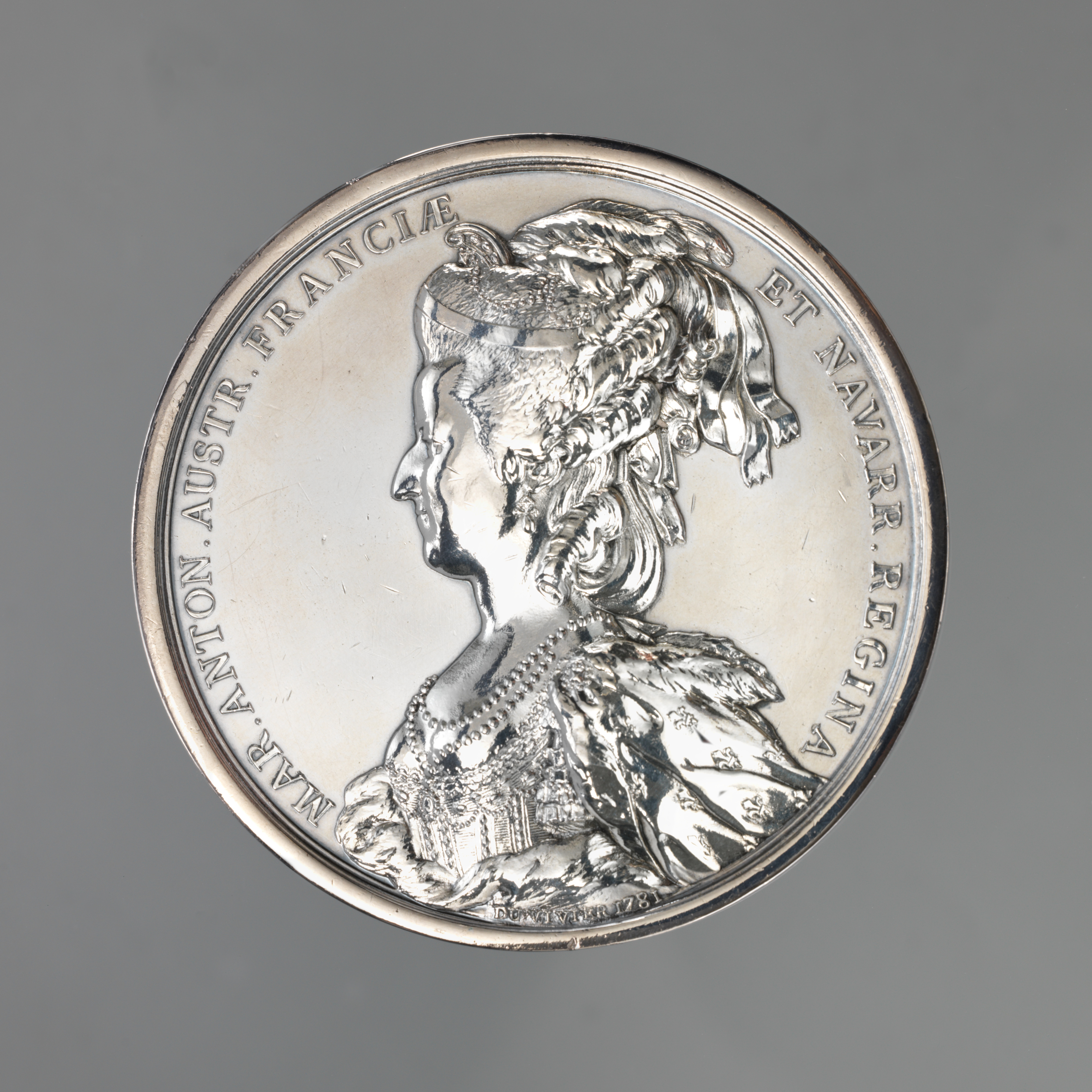Louis XVI and Marie Antoinette
Pierre-Simon-Benjamin Duvivier French
Not on view
This magnificent commemorative medal departs from convention. While the portrait of the king, in this case Louis XVI of France (1754-1793; r. 1774-1792), appears on the obverse as is customary, the allegorical imagery usually depicted on the reverse is here replaced by a portrait of Louis’s wife and queen, Marie Antoinette (1755-1793; r. 1774-1792). Because the reverse also lacks a commemorative inscription, it is uncertain what specific event in Louis and Marie Antoinette’s reign the medal celebrates. The date of 1781 may offer a clue.
In 1781, after seven years of marriage, Marie Antoinette gave birth to her first son and heir to the French throne. The medal may have been intended to celebrate the timelessness and majesty of royal sovereignty that was assured by the long awaited birth. The contrasting portraits of the king and queen each send a distinct message. Louis XVI is shown simply draped, uncrowned, and with flowing hair. His portrait evokes the images of rulers on ancient coins and visually connects his reign with the timeless concept of kingship. Marie Antoinette, on the other hand, is portrayed in dazzlingly bejeweled contemporary robes of state to represent the monarchy’s majesty. Only eight years later, such grandiloquent proclamations of rulership were shattered by the French Revolution.
A superbly gifted draftsman and engraver, Benjamin Duvivier, was chief engraver at the Paris mint and principal medalist to Louis XVI through the king’s reign. Louis XVI and Marie Antoinette is one of his most important and best-known medals.
Due to rights restrictions, this image cannot be enlarged, viewed at full screen, or downloaded.
This artwork is meant to be viewed from right to left. Scroll left to view more.



